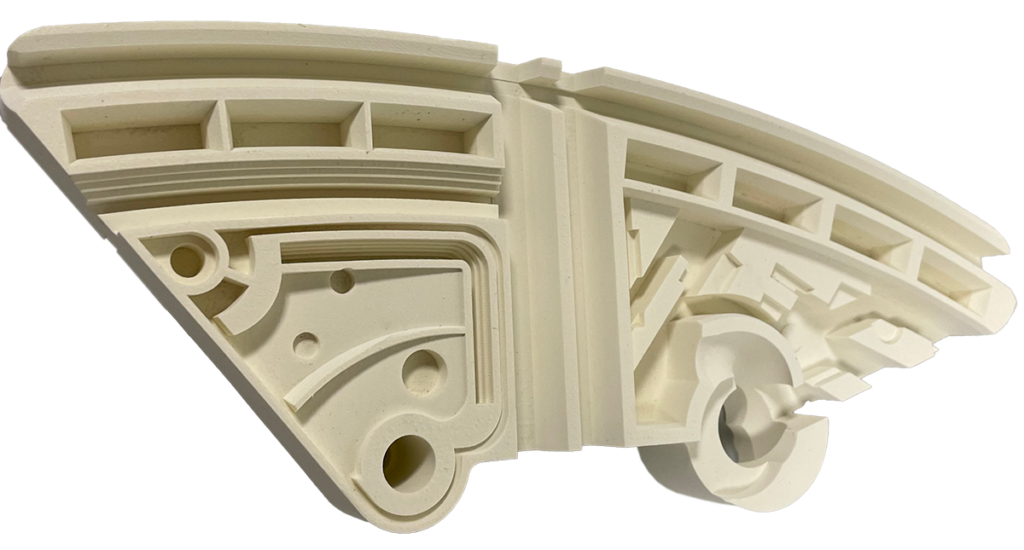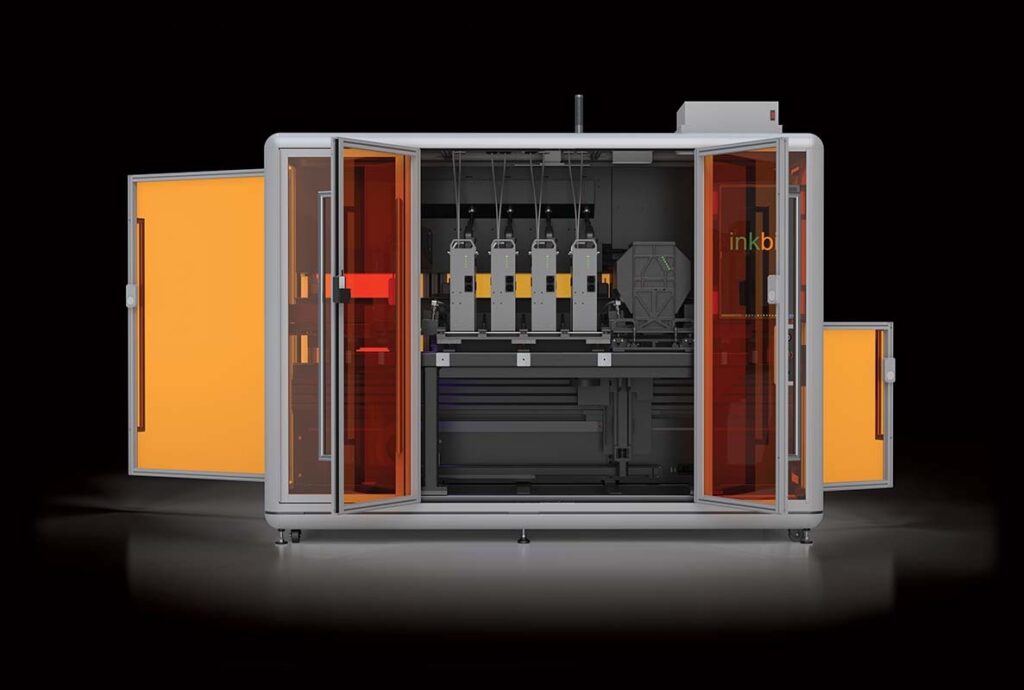On-Demand Parts from Inkbit’s Intelligent 3D Printer Now Available at NYC’s Makelab
On-demand parts 3D printed on Inkbit’s Vista Vision-Controlled Jetting (VCJ) platform are now available at Makelab, the NYC-based 3D printing service. Based in Medford, Massachusetts, Inkbit’s unique VCJ technology is touted as the first 3D printer that enables “closed-loop feedback control of the print process.”
VCJ achieves this by 3D scanning every layer as it’s printed, which, when compared with the original part design, helps determine the deposition of the next layer. According to Inkbit, this is what allows the company’s Vista platform to achieve high throughputs with elastomers and epoxies, the two principal material classes in Inkbit’s repertoire, which are both forms of thermosets. The addition of Soft Elastic (Inkbit’s Vulcan Soft Elastomer) and Tough Epoxy (Inkbit’s Titan Tough Epoxy 85) greatly expands Makelab’s potential customer base: for instance, from companies prototyping for the automotive and consumer electronics markets.
Elastomers are particularly significant offerings, given their abilities to substitute for silicones. Although the number of companies offering silicone for 3D printing is increasing, it is still relatively rare compared to other 3D printing materials. As silicone 3D printing becomes more popular, this should lead to parallel heightening of demand for possible substitution materials, especially given that silicone is found in such a wide variety of products, usually in the form of seals and gaskets.

In a press release about the addition of Inkbit’s Vista platform, along with Soft Elastic and Tough Epoxy materials, to the Makelab portfolio, Davide Marini, Inkbit’s co-founder and CEO, said, “Collaborating with Makelab was a logical progression in our dedication to offering customers an expedited route to the future of product development. Working with Makelab allows us to harness their expertise in on-demand 3D printing and pair it with the Inkbit VCJ technology, creating new avenues for functional prototyping and streamlining the transition from design to production.”
Christina Perla, co-founder and CEO of Makelab, said, “The Inkbit Vista system integrates cutting-edge precision and material versatility, enabling us to educate and transition our existing customers onto a more advanced platform and a new era of prototyping possibilities. Our partnership sets the stage for a new wave of agile hardware development and promises to further evolve the [AM] landscape.”

As much as the AM sector in the US does seem to be moving towards serial production, prototyping is just as important as ever to the sector’s vitality. In fact, AM’s growing success in producing at scale should only further bolster demand for prototyping applications, given the fact that the adoption of new methods for high-volume output will inevitably require a parallel rapid acceleration of US capacity for prototyping.
In this vein, it’s notable that Inkbit cites robotics and drones as two of the most viable applications for Titan Tough Epoxy 85. The Pentagon recently announced the replicator initiative, a push to create “autonomous systems at a scale of multiple thousands [and] in multiple domains within the next 18-to-24 months.” That can’t be done without a massive effort to reshape the US domestic manufacturing ecosystem, which in turn won’t be possible without expanding the US’s 3D printing capacity. This puts a premium on all facets of the US rapid prototyping supply chain.
With that said, it will be interesting to see how the replicator initiative affects the formation of advanced manufacturing clusters in the US. Although NYC is almost never discussed in this context, there’s no reason why the incorporation of leaner production methods and distributed manufacturing can’t turn a densely populated urban area into an advanced technology hub, so long as enough time and resources are devoted to such an effort. The reason there are companies like Makelab in NYC in the first place is because there’s such a high level of design talent in the area. It does not seem like too much of a stretch to think this could eventually translate into the city’s emergence as a key node in digitalized supply chains.
Images courtesy of Inkbit
Subscribe to Our Email Newsletter
Stay up-to-date on all the latest news from the 3D printing industry and receive information and offers from third party vendors.
Print Services
You May Also Like
3D Printing Financials: Prodways Ends 2024 with a Profit
After a tough couple of years, Prodways (EPA: PWG) is starting to bounce back. The French 3D printing company finally made a profit in 2024, improved its operating performance, and...
Blue Origin & Auburn University Use EOS M290 to Study Copper 3D Printing
Blue Origin, the commercial space company built off of investments from Amazon founder Jeff Bezos, has donated two EOS M290 powder bed fusion (PBF) printers to Auburn University’s National Center...
Rocket Lab to Acquire Restructured Laser Communications Provider Mynaric AG
Rocket Lab USA, the Long Beach-based, end-to-end space services company that specializes in producing rockets with additive manufacturing (AM), has announced plans to acquire Mynaric AG, a German provider laser...
3D Printing Financials: Stratasys Ends 2024 with Cost Cuts and Growth Plans
Stratasys (Nasdaq: SSYS) has wrapped up 2024 with stronger margins but a full-year net loss. The polymer 3D printing leader navigated a year of economic headwinds, restructuring efforts, and shifting...



























